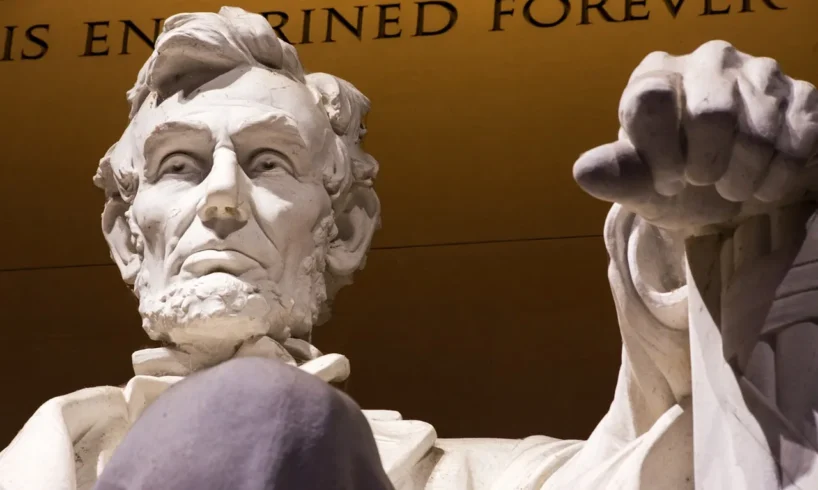
In the annals of American history, the presidency has been a position of immense power and responsibility. However, it has also been a role fraught with peril. The history of the United States is marked by attempts to assassinate its leaders, with four presidents having lost their lives to such attacks. From Andrew Jackson, who faced down his would-be assassin with a cane, to the more recent threats against Donald Trump, these events have left indelible marks on the nation’s consciousness and its political landscape.
Early Threats: A Nation’s First Encounters with Violence
The very first known assassination attempt on a U.S. president occurred in 1835, targeting Andrew Jackson. In January, Richard Lawrence, a deranged house painter, approached Jackson with two pistols. Remarkably, both guns misfired, and the 67-year-old president attacked Lawrence with his cane until bystanders intervened. This incident highlighted the vulnerability of even the most influential leaders in the young republic.
Presidential security was minimal back then, and such an event shocked the American public. The attempt on Jackson’s life was a wake-up call, signaling the need for increased protection for the nation’s head of state. This harrowing experience would set a precedent for how future presidents would be guarded.
The Gilded Age and Rising Threats
The late 19th century saw a rise in political violence, culminating in the assassination of three U.S. presidents: Abraham Lincoln, James A. Garfield, and William McKinley. Lincoln was the first to be assassinated in 1865, shot by John Wilkes Booth at Ford’s Theatre. This tragic event plunged the nation into mourning and altered the course of Reconstruction.

Garfield’s assassination in 1881 by Charles J. Guiteau, a disgruntled office seeker, further emphasized the need for reform in how political appointments were handled. McKinley was the next victim in 1901, shot by anarchist Leon Czolgosz. His death led to the establishment of the Secret Service as a permanent protective detail for the president, a measure that would evolve significantly over the years.
Mid-20th Century: The Era of Turmoil
The assassination of John F. Kennedy in 1963 marked one of the most influential and sorrowful periods in U.S. history. Shot by Lee Harvey Oswald in Dallas, Texas, Kennedy’s death was broadcast live across the nation, leaving an indelible impact on American society. The event spurred major changes in presidential security protocols and led to the creation of the Warren Commission to investigate the assassination.
During this era, other presidents also faced threats. An attempt on President Gerald Ford’s life in 1975 by Lynette “Squeaky” Fromme, a follower of Charles Manson, was foiled by the quick actions of Secret Service agents. Similarly, two weeks later, Sara Jane Moore fired a shot at Ford in San Francisco, which a bystander deflected.
Modern Day: Heightened Security and New Challenges
In more recent times, the assassination attempt on Ronald Reagan in 1981 by John Hinckley Jr. was a stark reminder of the ever-present dangers faced by U.S. presidents. Reagan survived the attack, but it highlighted the need for continuous advancements in security technology and protocols.
The threats against presidents have persisted into the 21st century, with Barack Obama receiving the most death threats of any president in history, attributed in part to his race and political stance. During Donald Trump’s presidency, he faced numerous threats and attempts, reflecting the highly polarized political climate of the time.
Lessons Learned and Looking Forward
The history of assassination attempts on U.S. presidents underscores the persistent threat of political violence. Each incident has led to increased security measures and shaped how presidents are protected. As technology advances, so do the methods of protection, but the fundamental challenge remains the same: safeguarding the leader of a nation in a world where threats are ever-evolving.
The Secret Service now employs traditional security measures and cutting-edge technology to protect the president. The agency constantly adapts to new threats, from armored vehicles to electronic surveillance.
As the U.S. moves forward, the lessons learned from past attempts are crucial in ensuring the safety of future leaders. The presidency remains a beacon of democracy and freedom, and protecting it is paramount. The nation strives toward a future where political discourse is safe and secure, free from the shadow of violence that has sometimes darkened its past.
Source: TheEpochTimes

Carl Riedel is an experienced writer focused on using Open Source Intelligence (OSINT) to produce insightful articles. Passionate about free speech, he leverages OSINT to delve into public data, crafting stories that illuminate underreported issues, enriching public discourse with perspectives often overlooked by mainstream media.






